Causal agents Sphaeropsis sapinea EPPO code DIPDPI Rank Species | Hosts pine trees Distribution United States Higher classification Sphaeropsis | |
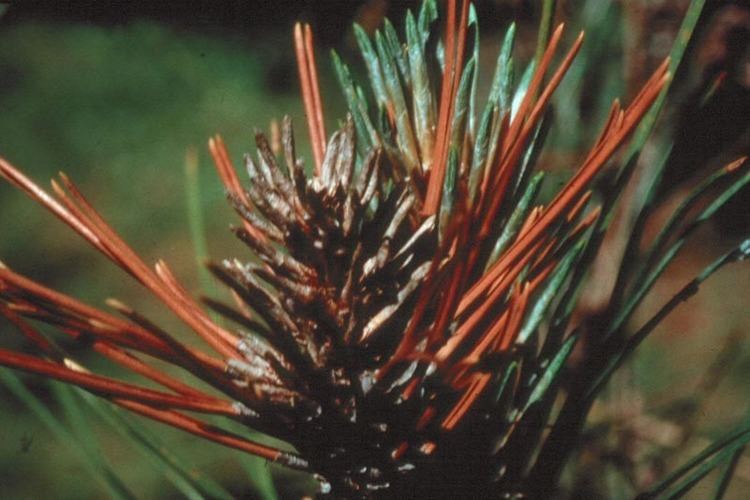 | ||
Common names dieback of pine
shoot blight of conifers
shoot dieback of conifers
tip blight of conifers
twig blight of conifers
whorl canker of pine Similar Diplodia, Dothistroma septosporum, Lophodermium, Scleroderris canker, Botryosphaeria | ||
Sphaeropsis blight is a disease that affects pines worldwide. This disease was previously known as Diplodia tip blight. Sphaeropsis blight is considered to be a "disfiguring disease" that attacks pine trees that are growing under stressful conditions. Sphaeropsis blight does not typically kill the tree, but will significantly disfigure the tree if not properly cared for or controlled. Most commonly, Sphaeropsis blight attacks Austrian (Pinus nigra), Scots (P. sylvestris), and red (P. resinosa) pine trees. This disease is a problem in the United States, nationwide, from coast to coast, and can be found worldwide.
Contents
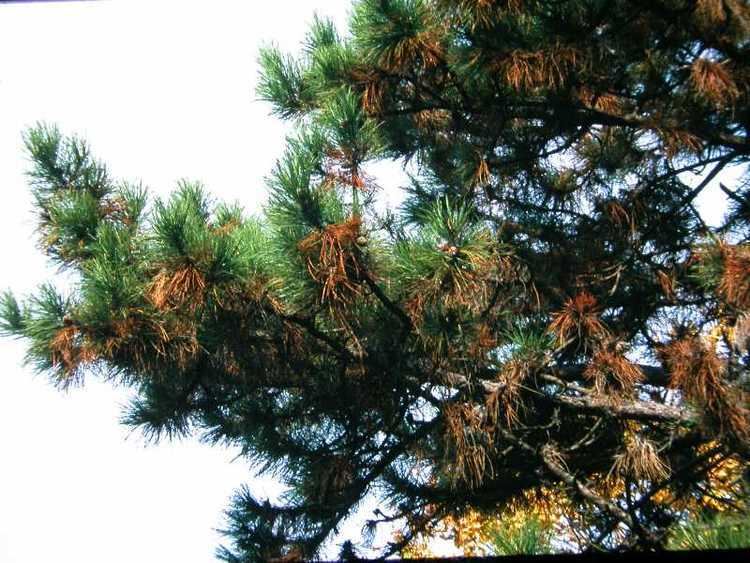
Description
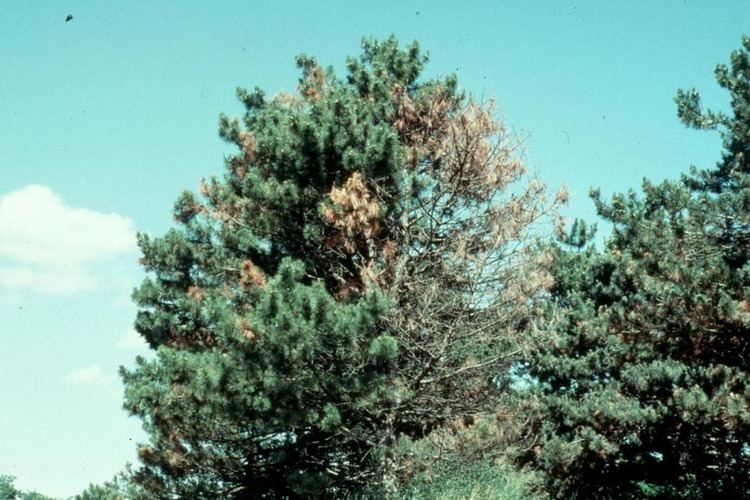
Sphaeropsis blight is caused by the fungus Diplodia pinea (=Sphaeropsis sapinea) and is known to infect the younger and healthy needles of newly formed candles. The trees that are most greatly affected by this disease are typically over 30 years of age, and rarely does it occur in the younger trees. The reason for this disease attacking older trees is due to the diseases growth from old, dying or dead seed cones. Younger trees can become infected if located near older, infected trees.

This disease is known to attack the tips and needles of trees that have been weakened by stress from drought, injuries to roots, not enough nutrients in the soil, excessive amounts of shade, as well as injuries inflicted from weather (high winds, hail, etc.) and insects.
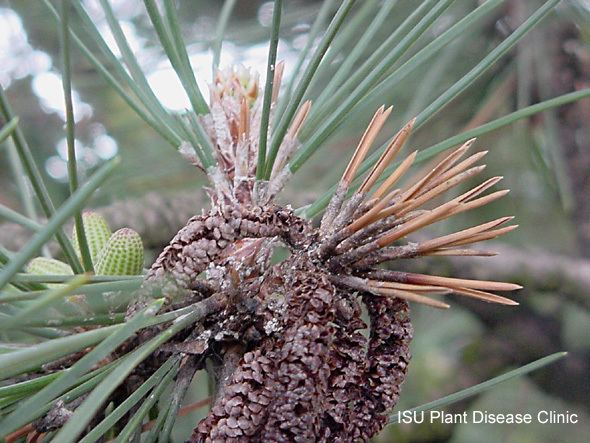
This disease causes what is known as “tip blight,” which resembles cankers that appear on the stems and branches of pine trees and can cause death, most typically in the lower branches of these trees. The cankers secrete a resin that can cause dead infected needles to stick to other parts of the tree after the dead needles have fallen. This may contribute to further infection of the tree. The most evident sign of a pine tree being infected with Sphaeropsis blight is if the tree(s) have “brown, stunted new shoots with short, brown needles”.
Disease cycle
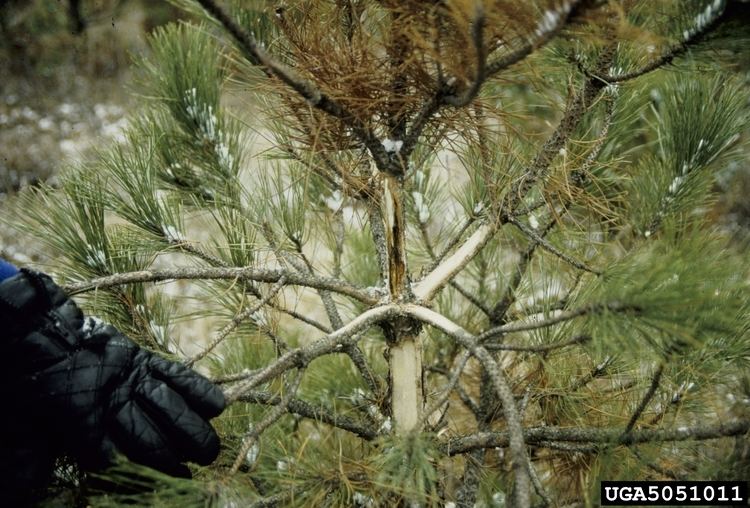
The spores from Sphaeropsis sapinea fungus typically first develop on the structures that will eventually develop on the “black fruiting structures that form on needles, fascicle sheaths, scales of second year seed cones, and bark” During the wet/rainy season, (depending on the location, could be from early spring until late fall) where the wet weather and wind can allow the spores to travel, as well as allow them to germinate the shoots and needles of the trees. Penetration of the shoots and needles normally occurs through the stomata opening or through the epidermis of young stems.

Once the needles are infected, the fungus quickly destroys the tissues within the needle which is the cause for the shoot and needles to become stunted and die after only a small amount of growth. The growth of the fungus is quick and deadly to the needles, traveling “through the needle, then to the stem, and finally into adjacent needles”.
The needles and stems that have matured or have survived uninfected through the previous years growth, as well as the pollen cones do not normally become infected. It is usually the new needles that are just beginning to form or have yet to form that are most susceptible to attack. During the winter, the Sphaeropsis sapinea fungus survives inside of “fruiting structures that develop on infected second-year cones, blighted needles, shoots, and cankers”.
How to control
It is important to remember that only the growth of the current season is susceptible to being infected by the Sphaeropsis sapinea. As the needles mature or survive more than one season, they become resistant of the fungus.
In order to help prevent this disease and its spread, it is important to reduce or prevent the stress that pine needle trees go through.
Pruning of diseased branches and tips will help with the overall look of the tree, but not prevent or stop the spread of the disease. The best time to prune the tree would be in the fall when the tree will be most dry.
The trees need to be provided with sufficient water, make sure the soil around the tree does not become compact, ensure the tree is not shaded and receives enough sunlight, and not affected by too much heat.
Some fungicides are available for prevention of spread of the disease, but consulting with a professional for application is required.
